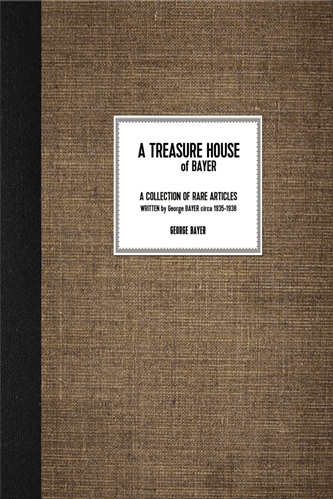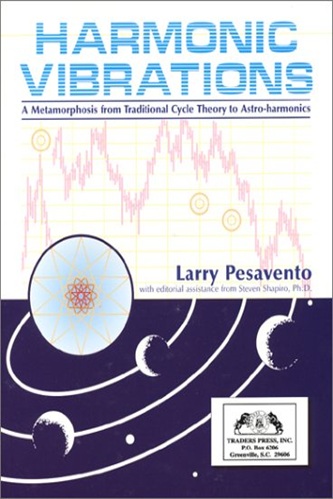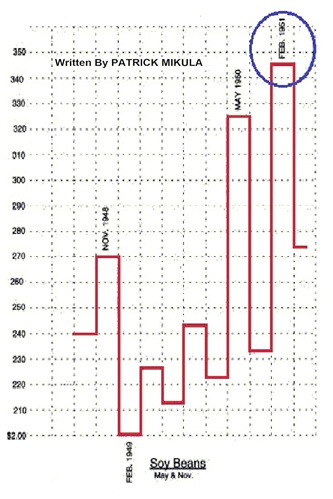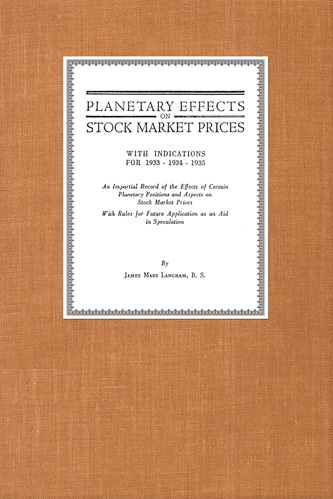A Treasure House of Bayer
$28.30
| Author(s) | |
|---|---|
| Product Type |
Ebook |
| Format |
|
| Skill Level |
Intermediate to Advanced |
| Pages |
135 |
| Publication Year |
1938 |
| Delivery |
Instant Download |
A Treasure House of Bayer is one of George Bayer’s most valuable compilations—a dense, intricate collection of his original trading methods, astronomical observations, and market forecasts. Known as one of the pioneers of astro-financial analysis, Bayer combined deep mathematical insight with a spiritual understanding of universal law. In this rare work, he reveals the principles that govern both natural and market cycles, showing that time, vibration, and planetary motion form the hidden structure behind price action.
This book gathers Bayer’s scattered teachings—once available only to his private students—into a unified system of interpretation. Readers discover how astronomical aspects correspond to major turning points, how harmonic numbers determine the length of market swings, and how geometry and time interact to define price rhythm. Far more than an astrology manual, this work functions as a bridge between scientific observation and metaphysical reasoning.
By applying Bayer’s laws of vibration and periodicity, traders can uncover the repeating forces that guide markets across decades. A Treasure House of Bayer remains essential for advanced students of Gann, Dewey, and astro-cycle theory, offering a priceless key to understanding the mathematics of destiny and the cosmic design of market behavior.
✅ What You’ll Learn:
- The universal mathematical principles underlying market movements.
- How planetary positions and aspects create predictable trading cycles.
- The geometric and harmonic relationships connecting time, price, and motion.
- How to decode the “Law of Vibration” and apply it to commodities and stocks.
- How to recognize planetary triggers that forecast market reversals and long-term shifts.
💡 Key Benefits:
- Gain rare access to George Bayer’s advanced astro-market insights.
- Learn how vibration and resonance govern market structure and timing.
- Develop techniques to anticipate turning points with scientific precision.
- Understand the link between cosmic law and economic rhythm.
- Elevate your technical analysis through the integration of geometry, astronomy, and mathematics.
👤 Who This Book Is For:
- Traders and analysts studying W.D. Gann and early astro-cycle research.
- Students of market geometry, vibration theory, and celestial timing.
- Esoteric researchers exploring the mathematical harmony between nature and finance.
- Professionals seeking to refine long-term forecasting through planetary analysis.
📚 Table of Contents:
- A Treasure House of Ephemerides
- The Centiloquy: One Hundred Aphorisms or Truths of Claudius Ptolemy
- Least, Mean and Great Conjunctions: New Light on a Mystery of Ptolemy’s Centiloquy
- A Five-fold Horoscope: A New Approach to Stock Market and Individual Forecasts
- September Stocks and Wheat: Sound Advice for the Investor Covering General Market Movements
- October Stocks and Wheat: Sound Advice for the Investor Covering General Market Movements
- Do Sun Spots Control Business?, What Makes a Lucky Speculator?: Study These Charts and Find Out! – Prizes for the Best Analyses
- November Stocks and Wheat: How to Figure for a Win During the Month After Election
- Astrologers Make History at Convention: Three Days and Nights of Concentrated
- Enthusiastic Professional Good Fellowship
- Forecasts for Stocks and Wheat: Notes to Traders for December 1936
- Contest Rules: What Makes a Lucky Speculator?, Forecasts for Stocks
- Wheat and Cotton: Notes to Traders for January 1937
- Beneath the Stars: An Astrological Causerie Conducted by Dr. W.M. Davidson
- I Beg Your Pardon, Forecasts for Stocks
- Wheat and Cotton: Notes to Traders for February 1937
- Forecasts for Stocks, Wheat and Cotton: Notes to Traders for March 1937
- Forecasts for Stocks, Wheat and Cotton: Notes to Traders for April 1937
- Market Analysis for May 1937
- Market Analysis for June 1937
- Market Analysis for July 1937
- Market Analysis for December 1937
- Market Analysis for January 1938
- Market Analysis for February 1938
- Market Analysis for March 1938
- Market Analysis for April 1938
- Market Analysis for May 1938
- Market Analysis for June 1938
- Market Analysis for July 1938
- Market Analysis for August 1938
- September Market Analysis
- October Market Analysis
- November Market Analysis
- Market Forecast for December 1938
A Treasure House of Bayer By George Bayer









